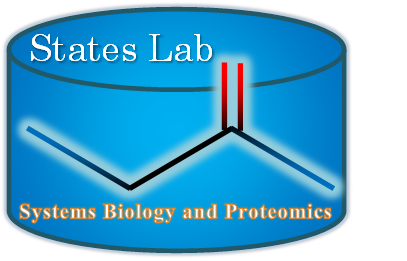Using the appropriate computational methods can simplify and elucidate complex data sets. The top two panels illustrate the application of absolute value and pure absorption phase NMR spectrometry to a 2-D data set of nuclear Overhauser effects in bovine pancreatic trypsin inhibitor [1]. The absolute value or power spectrum can be aquired with a simpler pulse sequence, but it results in complex and confusing interactions between peaks in the spectrum. By aquiring the real and imaginary components of the spectrum in both dimesions, we showed that a pure absorption phase spectrum could be obtained, greatly simplifying the data and enhancing the effective resolution.
The lower two panels illustrate resolution of alternative splice isoforms in proteomics mass spectrometry data. The data are peptides derived from complement C3 found in mouse plasma. By applying multi-dimensional chromatography to fractionate the intact proteins in advance of tryptic digest LC-MS/MS analysis, we show that it is possible to resolve individuals splice isoforms [2]. The left hand panel shows the distribution of all peptides derived from C3. The right hand panel shows the distribution of peptides derived from one specific splice variation, a much simpler and more compact distribution. Nevertheless, it is clear that many variants of complement C3 are circulating in plasma.
1) States, D.J., Haberkon, R.A. and Ruben D.J. (1982) A Two-Dimensional Nuclear Overhauser Experiment with Pure Absorption Phase in Four Quadrants. Journal of Magnetic Resonance 48:286-292.
2) Zhang, Q. Menon, R., et al., States, D.J. and Hanash, S. (2008) A Mouse Plasma Peptide Atlas as a Resource for Disease Proteomics. Genome Biology 9:R93







